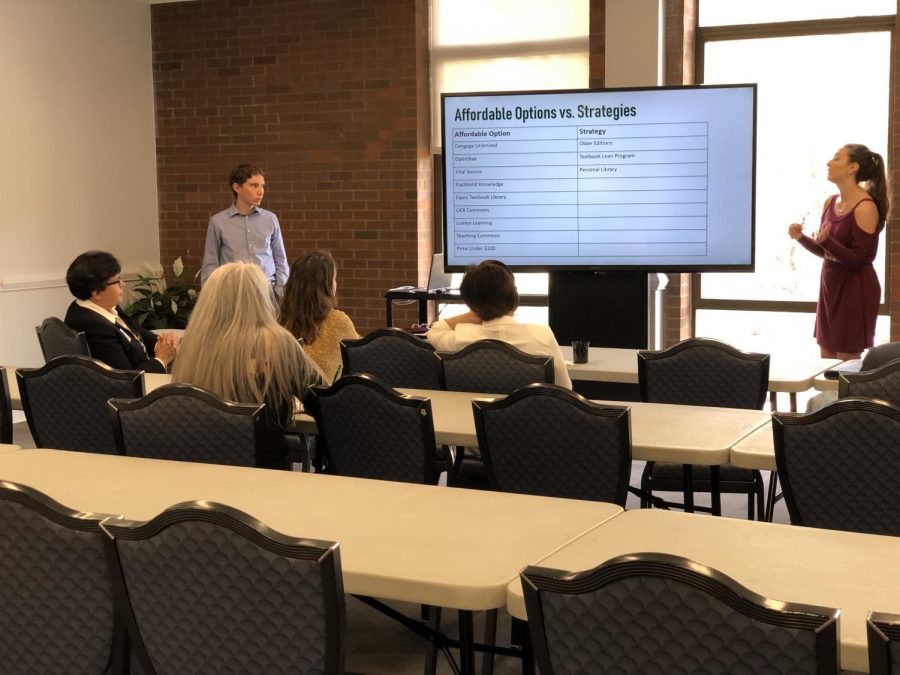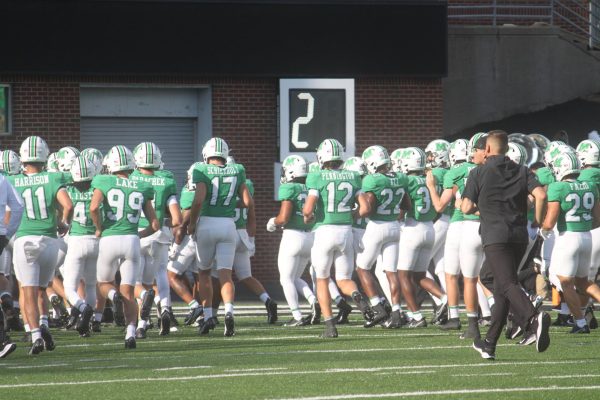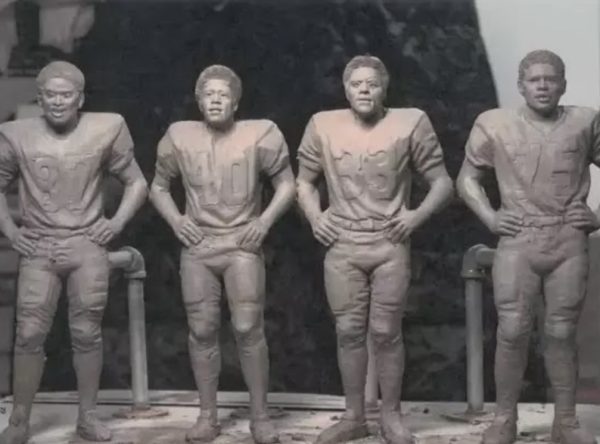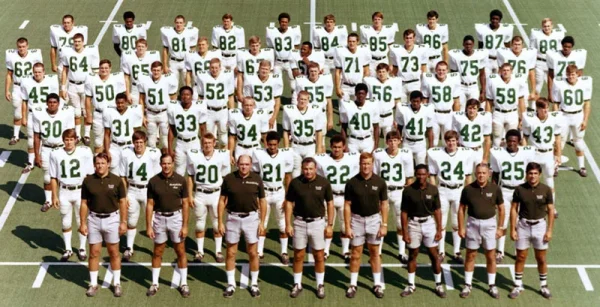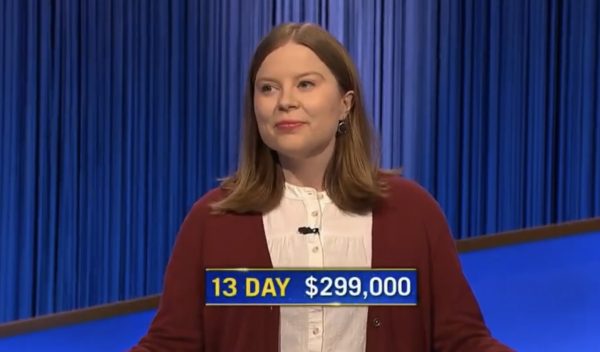Student body president, vice president host educational material training
Student Body President Hunter Barclay and Student Body Vice President Hannah Petracca present information about affordable options and strategies during an Affordable Education 101 Material Training in the Shawkey Room of the Memorial Student Center Thursday.
To equip Marshall University faculty members with knowledge and strategies they could use to find more cost-effective educational materials for their courses, Student Body President Hunter Barclay and Vice President Hannah Petracca presented a training Thursday in the Memorial Student Center.
“The purpose of this training was to make the whole process that Hunter (Barclay) and I have been through together simpler and less daunting for faculty, because we have done the research, and we have done a lot of the number crunching, and we understand that it can be a daunting task,” Petracca said. “So, the purpose of this training was to simplify the process and make it easier for faculty to move forward with finding an affordable option.”
During the training, entitled the Affordable Education 101 Material Training, Barclay and Petracca discussed affordable options for educational materials that faculty members could use and how to find them.
Barclay and Petracca taught faculty members how to find affordable options using the acronym ACDC, which was created by Barclay. The acronym stands for “Acquire the bookstore’s price, Compare that price to other platforms, Delve into affordable alternatives, Calculate cost savings,” according to Barclay and Petracca.
Some affordable options Barclay and Petracca presented from their research included platforms such as Cengage Unlimited, OpenStax, Vital Source, FlatWorld Knowledge, Open Textbook Library, OER Commons, Lumen Learning, Teaching Commons, as well as a general option of other textbooks/materials costing under $100. Strategies included using older editions of books, utilizing the Textbook Loan Program and utilizing a personal library.
Barclay said the difference between affordable options and strategies is that affordable options have the potential, when students are paying for their course materials, to affect every student in a course, while a strategy is something that is not going to have an effect on the entire class.
Departments who have one or more of the 22 “high yield” courses Barclay and Petracca identified through their research also qualify to receive stipends coming from the university central fund for making the switch to affordable options, Barclay said.
According to Barclay and Petracca, the criteria that was used to select candidates for the stipends included the course having high enrollment, the course having class materialscosting over $100 collectively, “quality alternatives” existing for the course’s current class materials and the course having an ability to make the transition to alternatives.
These 22 “high yield” courses are as follows, according to Barclay: SOC 200, MTH 121, MTH 130, BSC 104, BSC 105, PSY 201, ACC 215, ACC 216, PHY 201, PHY 203, HS 220, BSC 120, BSC 121, BSC 227, BSC 228, MTH 102, ECN 250, ECN 253, THE 112, CMM 207, MUS 142 and MTH 127.
Barclay and Petracca also showed faculty members the new icon that designates, on Marshall’s Banner Extraction and Reporting Tool (MU BERT), courses that will be using what is considered an affordable option.
When students are searching for courses, they will see a circle with an x through it if no textbook is required for the course and will see a book symbol if a textbook is required for the course. If that course uses an “affordable option” it will have a dollar sign with a check mark through its right side in addition to the textbook symbol.
Larry Sheret, scholarly communication and open educational resources librarian for Marshall libraries, said he attended the training because he will be making similar presentations throughout the university about educational materials, and he wanted to see not only the content but the techniques Barclay and Petracca would use when presenting.
Sheret said the presentation was professionally done, the information was clear and he liked that the audience could ask questions throughout the presentation.
“What the students do has a greater impact than anything the rest of us do,” Sheret said. “When the students are truly behind an agenda like this, the administration and the faculty perk their ears up and take it very seriously. In fact, we get excited when students come up with solutions and push the envelope toward a solution, so I think Student Government Association’s involvement in this is the lynchpin that’s making it happen, really. It would happen eventually, but it is what’s getting everybody’s attention.”
Barclay said a goal, moving forward, is to have a video recording of the training, so they can email it to department chairs, deans and faculty members, so they have a way to watch the training if its more convenient for their schedules. He said that may not happen immediately, but it’s something he hopes to have put together before the end of the school year.
Jesten Richardson can be contacted at [email protected].
Your donation will help continue the work of independent student journalism at Marshall University. If you benefit from The Parthenon's free content, please consider making a donation.


